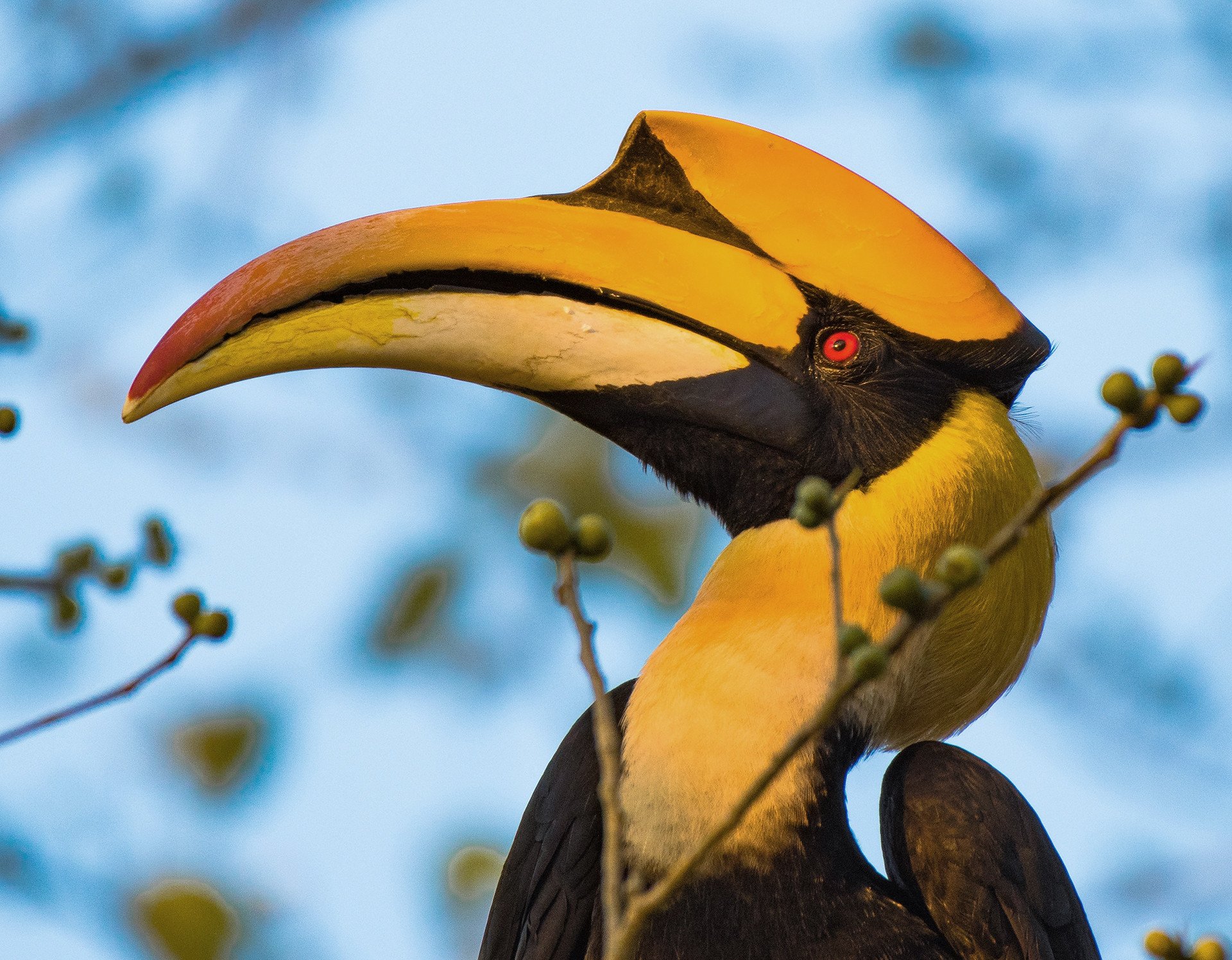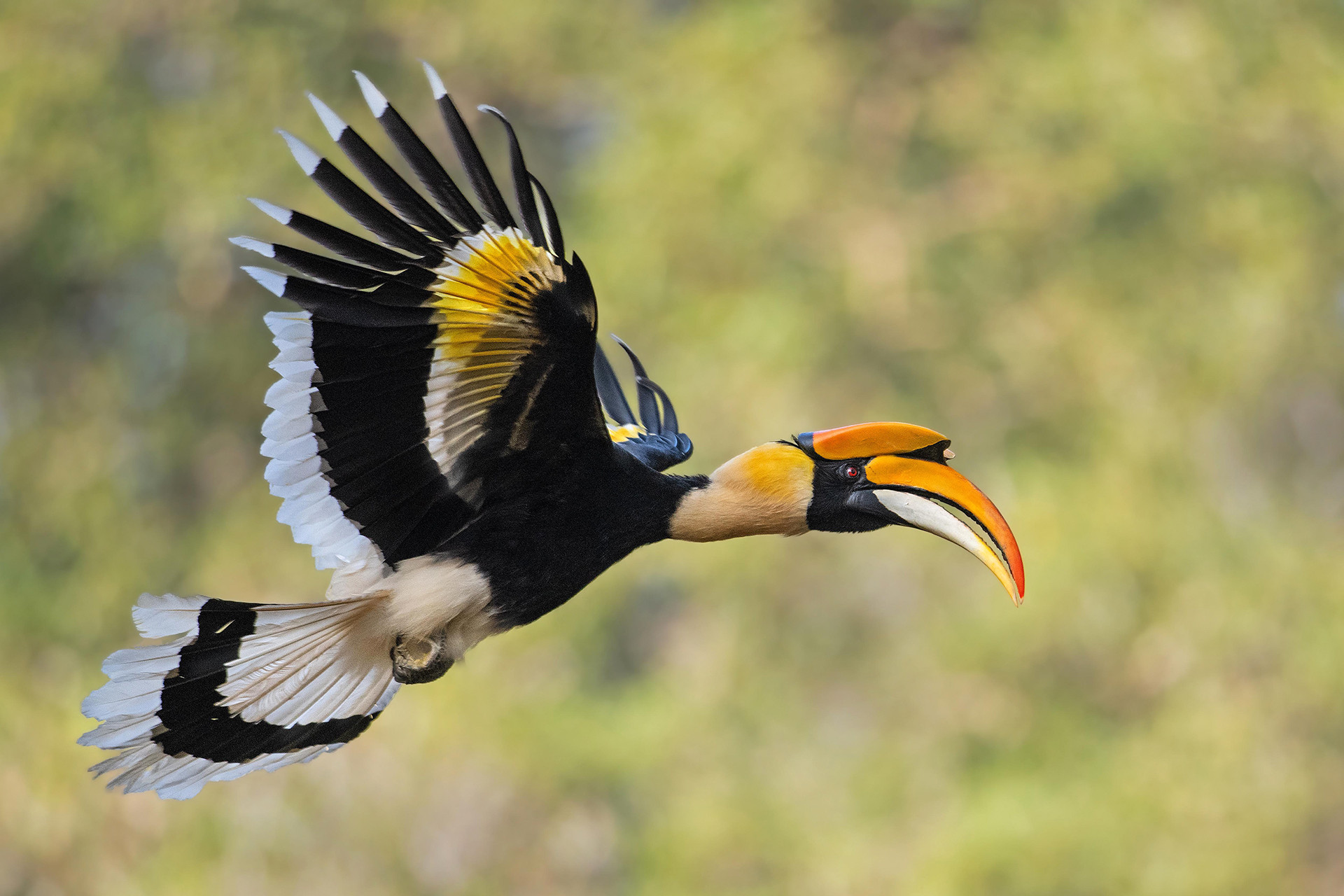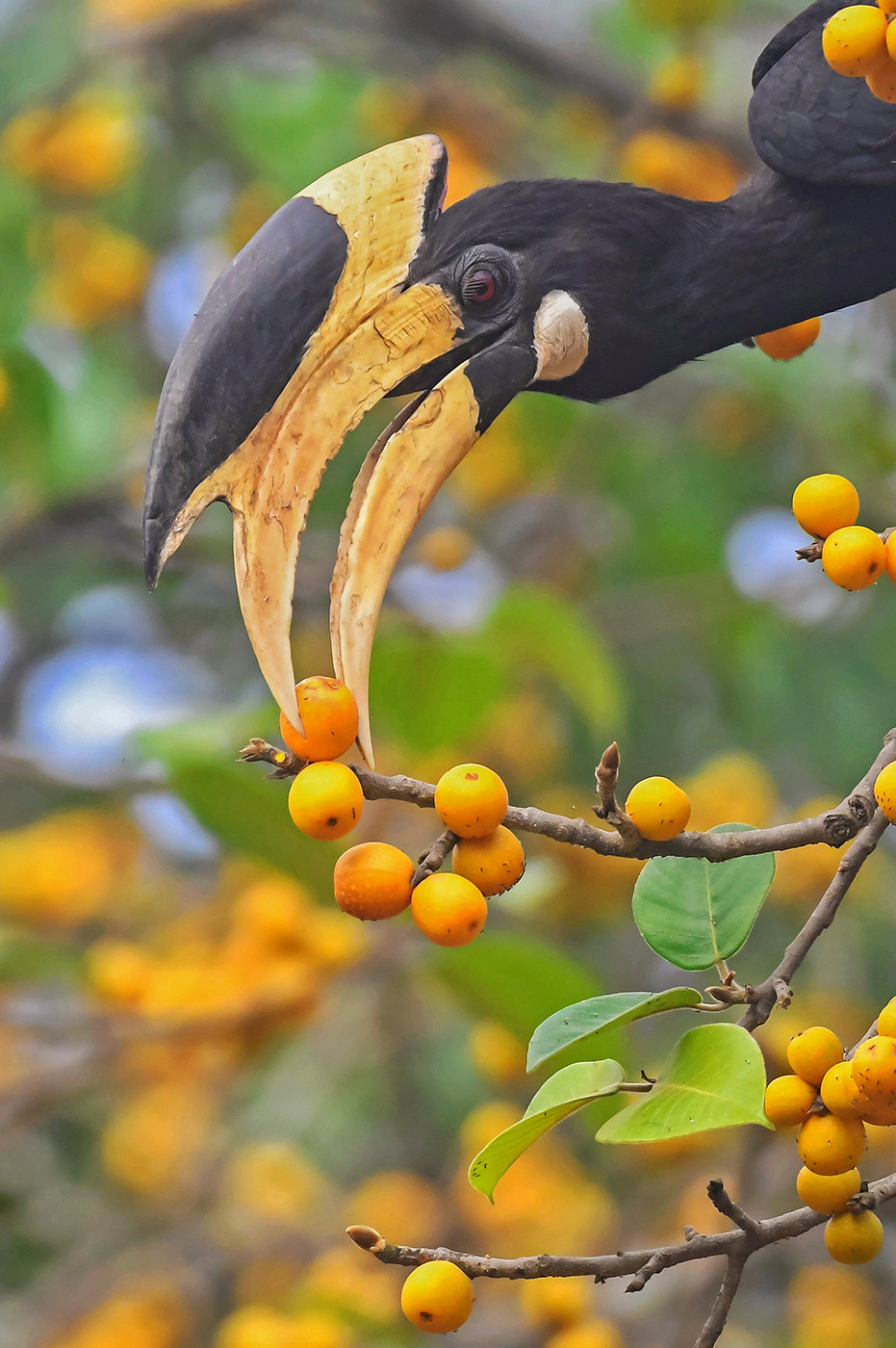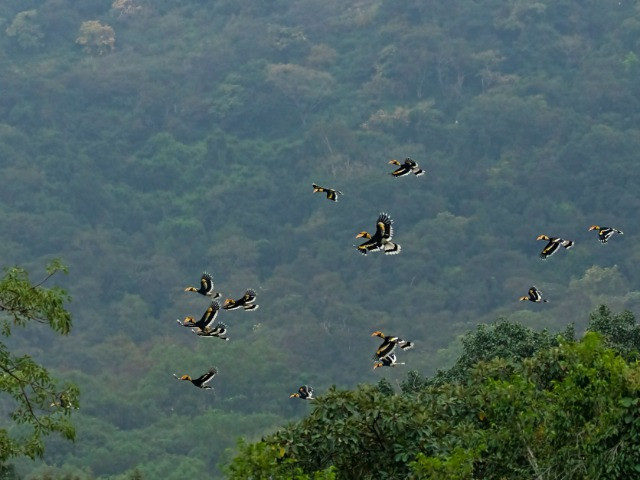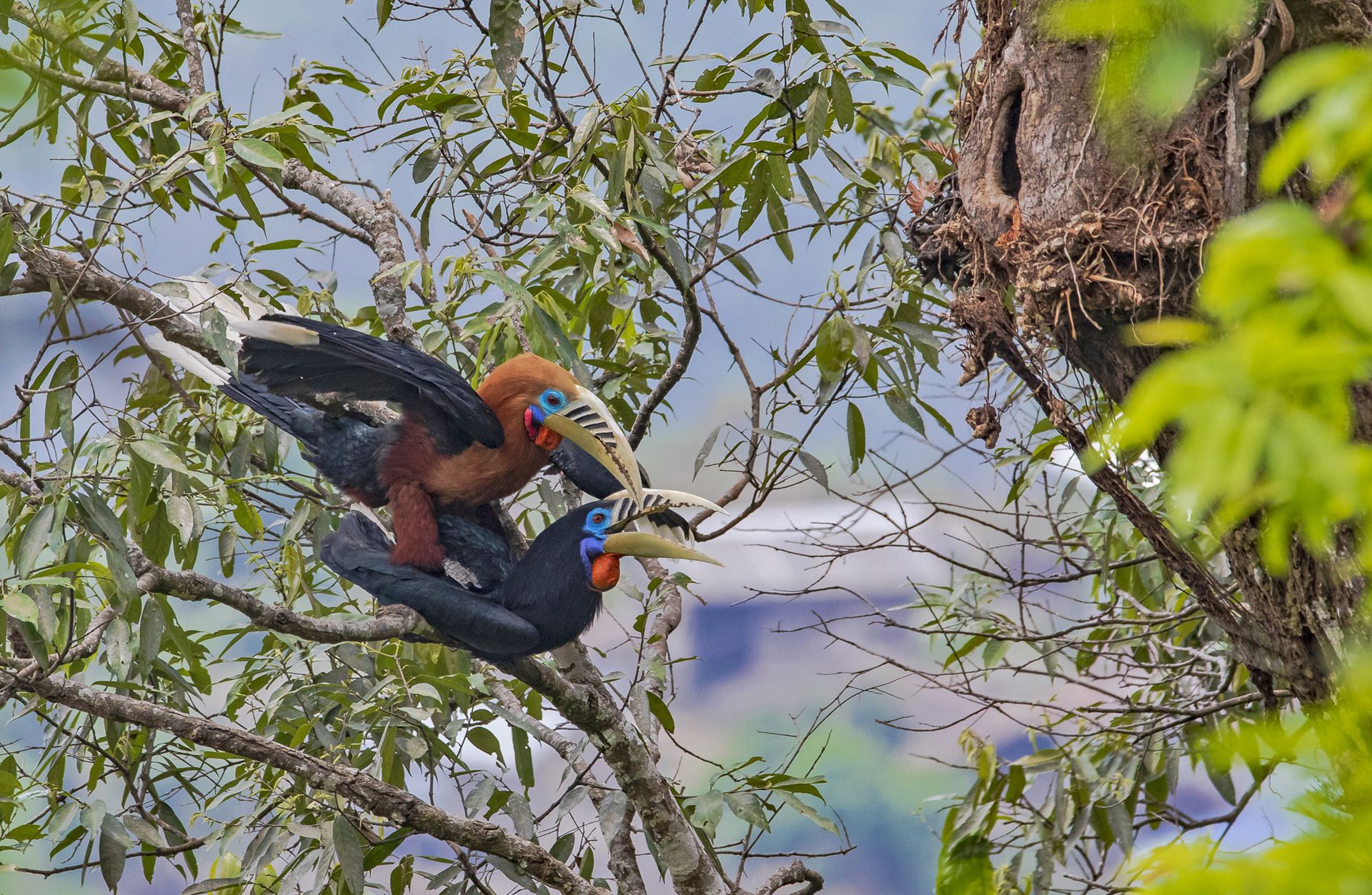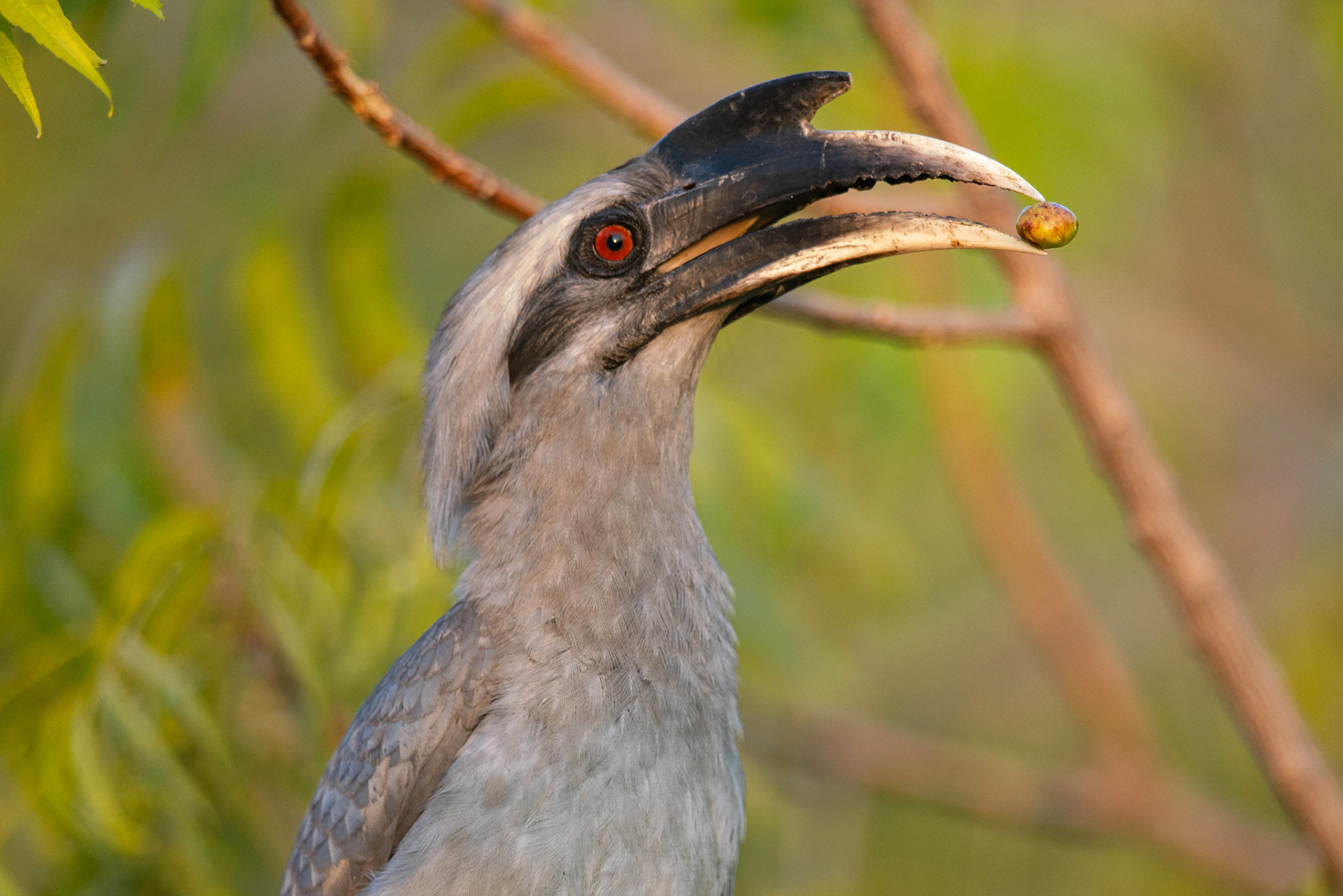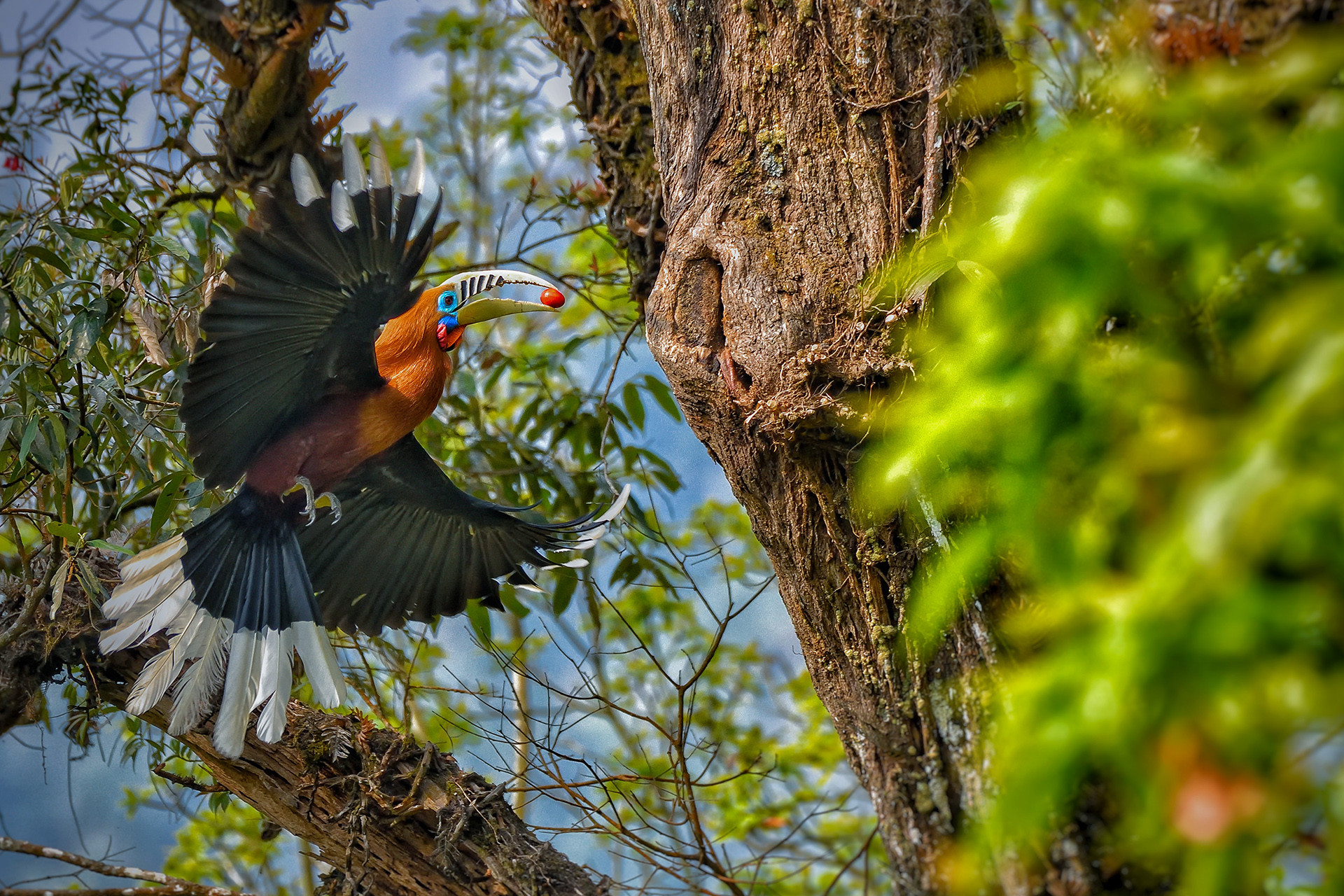Known as the farmers of our forests, hornbills are large charismatic birds with disproportionately large beaks and distinctive calls. Their unique casques and colourful appearance make them hard to miss. But, there is more to these birds than meets the eye. Did you know that one can hear the wingbeat of a Great Hornbill from almost a kilometre away? Or that in regions where hornbills are protected, seed dispersion on the forest floor is seven times higher compared to regions where their populations are disturbed? We bring you more of the same in this ready-made primer on India’s hornbills. Get ready for a trip to India’s tropical forests and to learn more about these enigmatic birds.
1—On Cloud Nine
First, some figures. There are 62 hornbill species in the world, with 32 in Asia and 30 in Africa. India is home to nine of them including the Great Hornbill, the Malabar Pied Hornbill and the Rufous-necked Hornbill. Namdapha National Park in Arunachal Pradesh houses the highest density of hornbills across Asia. Here, hornbills disperse seeds at the rate of 11,000 seeds per day per sq.km.! The Western Ghats alone are home to four of the nine hornbill species, of which the Great Hornbill is the most prominent.
2—Heavy Hangs The Head
Several hornbill species have a helmet-like structure on their upper mandibles which is known as a casque. Although the casque is a prominent morphological feature, it can be inconspicuous in some hornbill species. Casques also vary in colour, with a dull appearance in some hornbills and brightly coloured in others. Casques are known to add strength to the bills and aid in augmenting the bird’s calls.
3—Clash Of Crowns
The Great Hornbill or the Great Pied Hornbill or the Great Indian Hornbill is the largest among the hornbills found in India. They are primarily frugivores, although they also feed on small mammals and birds. Male hornbills are identified by the black edges in the front and back of the casque, while females have red colouration at the back. Males exhibit aerial ‘casque-butting’ when they engage in fights with other males. While casque-butting is observed as an act of marking territory or winning over a potential mate, there may be various other reasons why hornbills engage in this activity, much of which remains unknown.
4—Name Your Poison
Next up, the Malabar Pied Hornbill. They are endemic to tropical forests in India and Sri Lanka. They mainly feed on fruits, but also hunt insects and small birds. They visit fruiting trees throughout the day looking for food and also disperse seeds en route. One interesting fact about this hornbill species is that they can eat the fruits of the Strychnos nux-vomica or the strychnine tree, which are toxic for many vertebrates.
You may also like to read
5—Out East
On to the Rufous-necked Hornbill. They are seen in the north eastern parts of India, especially in Arunachal Pradesh. Rufous-necked Hornbills are the most endangered and the least studied of the nine hornbill species found in India. The rufous colour is found in the underparts, neck and head of the male species, while females are mostly black in colour. They move between forest regions seasonally to forage from fruiting trees.
6—Cast Away
Have you ever seen a Narcondam Hornbill? If you haven’t, then your only chance to sight this bird is to sail to Narcondam Island in the Andaman Sea. In fact, this hornbill species is only found in a 12sq.km.stretch in the tropical forest of the island. No wonder they have the smallest home range among Asian hornbills. Narcondam Hornbills faced severe extinction threats a few decades ago due to habitat loss. Efforts were made to conserve this species, boosting their population from as few as 360 hornbills in 1999 to more than 1000 today. They are listed as Vulnerable by the IUCN Red List of Threatened Species.
7—Grey Is The New Black
Okay, how about a species that you can spot easily! Meet the Indian Grey Hornbill, the most commonly seen hornbill species in India. The medium-sized bird is sometimes even spotted in parts of cities where there are old trees. As the name suggests, they are grey in colour with a smaller casque compared to their other counterparts. During the breeding season, male hornbills try to woo the females by offering them various food items. Gulmohar, Peepal, Jamun and Banyan are some of the most preferred trees for hornbills to build their nests. Birdwatcher and conservationist Ajay Gadikar recorded the complete breeding cycle of the Grey Hornbills, in the city of Indore, Madhya Pradesh, through a CCTV!
8—Date A Delivery Guy
Did you know that hornbills use the same nests over the years? During nesting, the female seals herself in the nest cavity for 3-4 months, leaving only a slit open through which the male delivers food to her, and the chicks. Hornbills are also monogamous breeders. Once hornbill pairs find a suitable nesting site, they monitor the location for a week to ensure that it is safe. Male hornbills also bring more animal food once the eggs hatch, so the chicks have sufficient nutrition. Pooja Pawar has documented and studied the behaviour of the Great Hornbills that reside in the Valparai region of the Anamalai Tiger Reserve, Tamil Nadu, in great detail.
9—Fraught With Danger
The fact that they use the same nests over the years makes it imperative to protect the trees and their nesting areas. Sadly, many hornbill species are in danger as their habitats are destroyed by fragmentation, deforestation and clearance of forest regions for agriculture and dams. For example, the Wreathed Hornbill and Narcondam Hornbill are listed as Vulnerable and the Malabar Pied Hornbill as Near Threatened by the IUCN Red List. Poaching is also a massive threat for hornbills as they are hunted down for their large casques.
10—Keep A Close Watch
To conserve hornbills, the need of the hour is to stop illegal and unregulated logging of large trees, and removal of old trees with cavities. The loss of native trees affects their nesting and diet, posing a significant threat to their survival. You can record your observations and upload photographs of your hornbill sightings on Hornbill Watch—a citizen science initiative launched by Hornbill Nest Adoption Program, Nature Conservation Foundation (NCF), Conservation India, the Ghora-Aabhe Society and the Whitley Fund for Nature. You can also contribute to hornbill conservation programs or adopt a nest!


